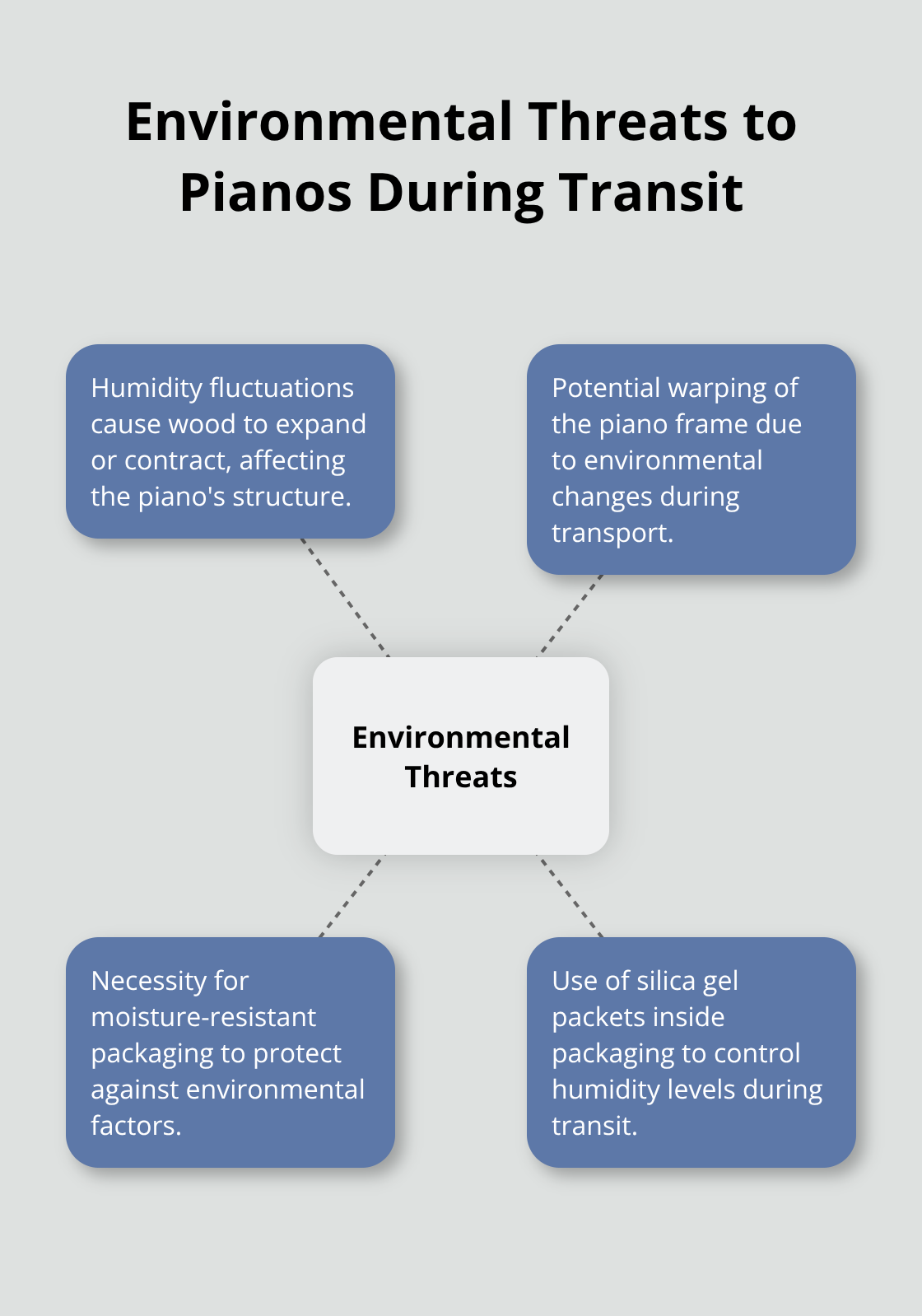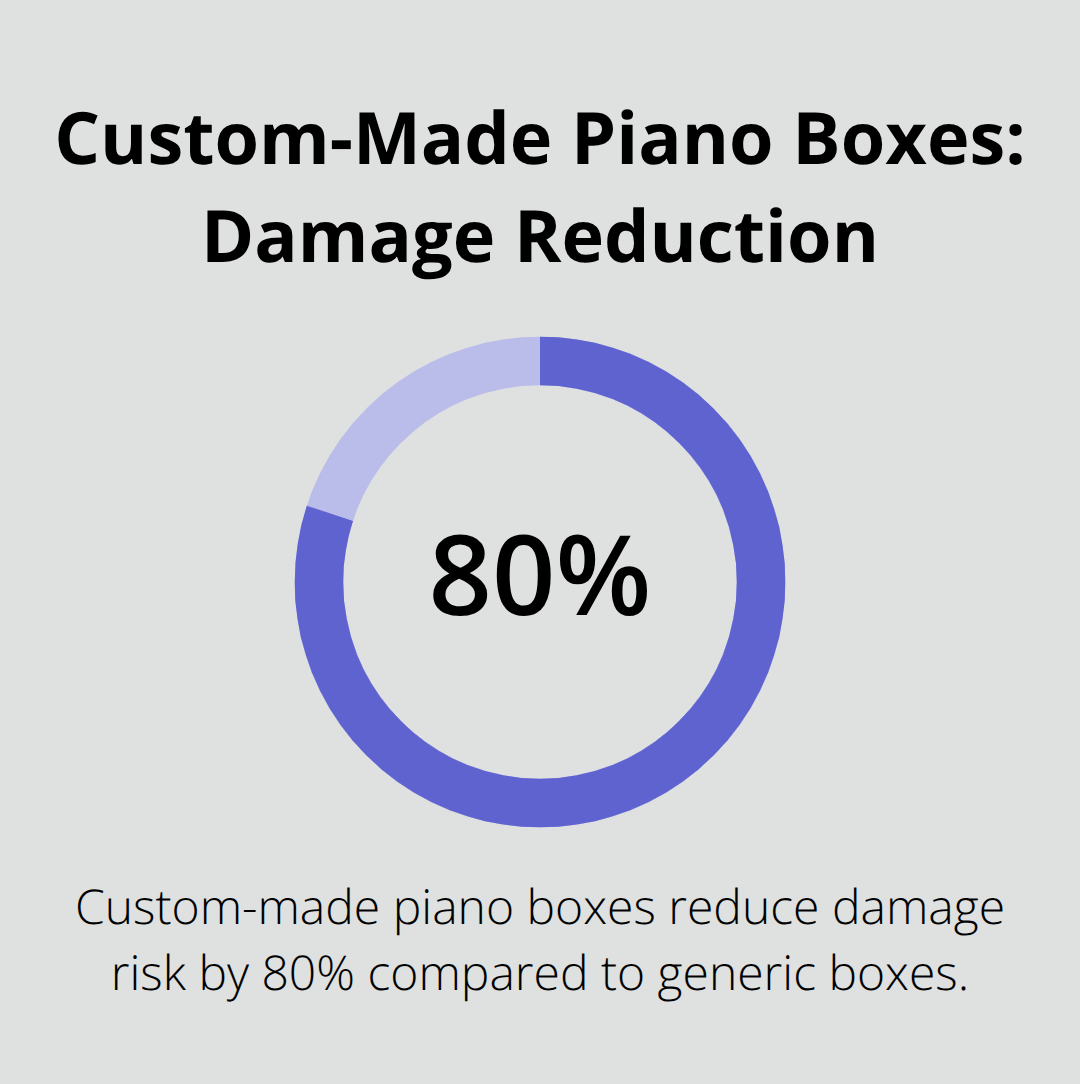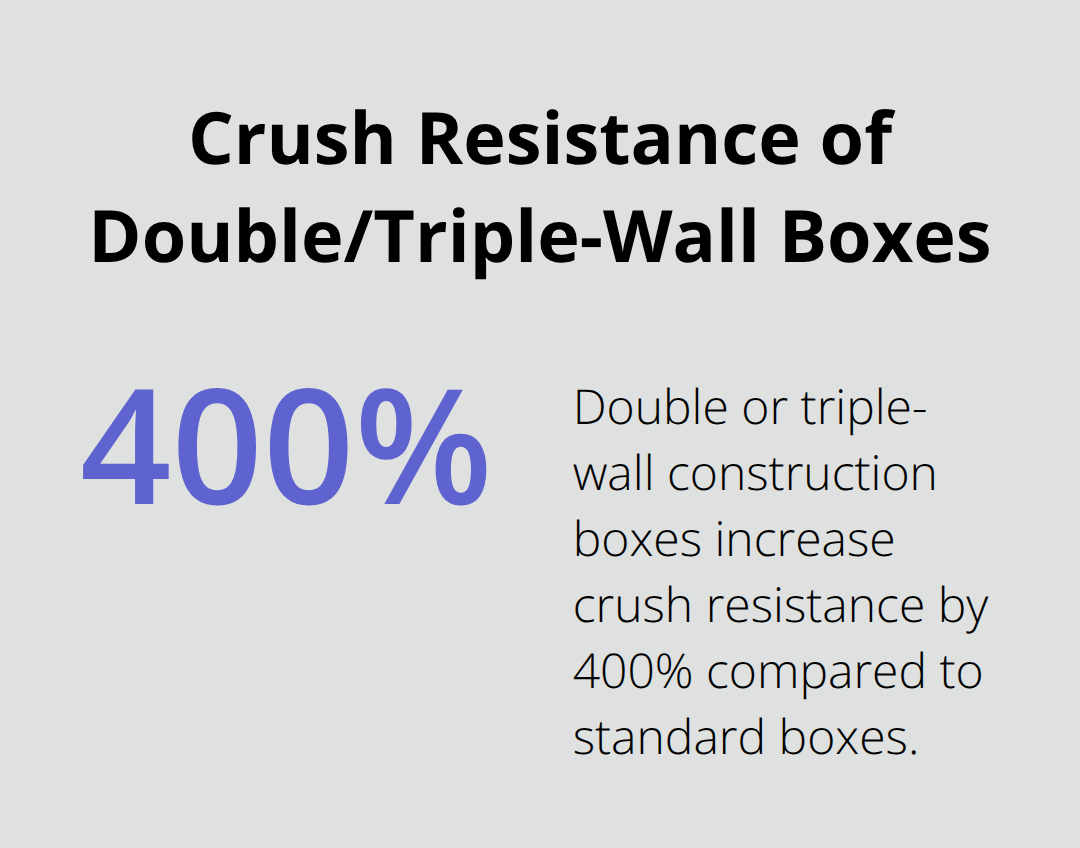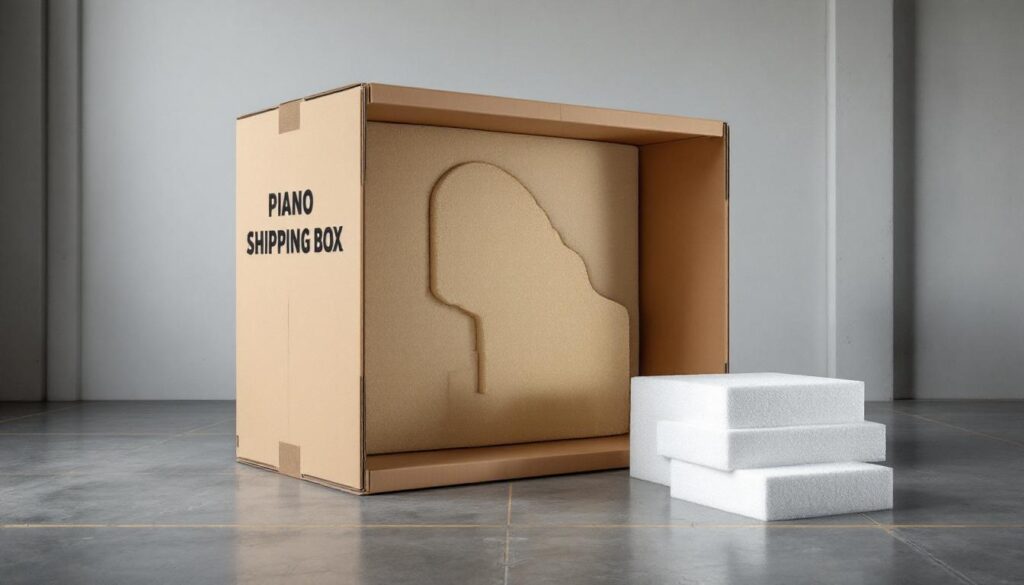Moving a piano is a delicate task that requires careful planning and the right equipment. At Southbay Moving Systems, we understand the importance of choosing the perfect piano shipping box to protect your valuable instrument during transit.
The right packaging can shield your piano from physical damage, environmental factors, and ensure its safe arrival at its destination. In this guide, we’ll explore the various types of piano shipping boxes and the key features to consider when selecting the best option for your prized possession.
Why Proper Piano Packaging Matters
At Southbay Moving Systems, we’ve witnessed the consequences of inadequate piano packaging. Proper packaging isn’t just a precaution; it’s a necessity for protecting your valuable instrument during transit.
Shield Against Physical Damage
Pianos are exceedingly fragile, and can be damaged even with the smallest of impacts. Even minor impacts can cause significant damage. Improper wrapping can lead to deep scratches in high-gloss polyester finishes, while small uprights are particularly vulnerable to broken legs during moves. High-quality packaging materials absorb shocks and vibrations, which prevents keys from misalignment and internal components from shifting.
Combat Environmental Threats
Environmental factors pose a serious risk to pianos. The Wood Products Association reports that fluctuations in humidity can cause wood to expand or contract, potentially warping the piano’s frame. Proper packaging with moisture-resistant materials is critical. For instance, the use of silica gel packets inside the packaging can help control humidity levels during transport.

Facilitate Safe Transportation
The right packaging doesn’t just protect; it also enables safer handling. This allows movers to maneuver the instrument more securely, which reduces the risk of accidents.
Invest in Quality Materials
When it comes to piano packaging, cutting corners is not an option. Investment in high-quality materials and professional packing services can save you from costly repairs and preserve the value of your instrument. Industry-leading packaging techniques ensure your piano arrives at its destination in perfect condition.
The choice of the right piano shipping box is critical to the safety of your instrument. Let’s explore the various types of piano shipping boxes available and their unique characteristics.
Piano Shipping Box Types: Choosing the Right Protection
Wooden Crates: Maximum Security for Your Instrument
Wooden crates stand as the premier choice for piano shipping. These custom-fit containers offer unparalleled protection for long-distance moves or particularly valuable pianos. The Piano Technicians Guild recommends wooden crates for long-distance moves or when shipping valuable antique pianos.
Pros:
- Unparalleled protection against impacts
- Excellent defense against environmental factors
- Ideal for valuable or antique pianos
Cons:
- Most expensive option ($500 to $1,500)
- Heavy, which can increase shipping costs
- Requires professional assistance for packing and unpacking
Reinforced Cardboard Boxes: Budget-Friendly Protection
For shorter moves or cost-conscious situations, reinforced cardboard boxes offer a viable alternative. These specially designed boxes feature double or triple-wall construction with reinforced corners for added durability.
Pros:
- More affordable than wooden crates
- Lighter weight, potentially leading to lower shipping costs
- Suitable for local moves or shorter transit times
Cons:
- Less protection against severe impacts
- More vulnerable to prolonged moisture exposure
- Not ideal for long-distance or international moves
Custom-Made Piano Boxes: Tailored Fit for Your Instrument
Custom-made piano boxes bridge the gap between wooden crates and cardboard boxes. Typically constructed from heavy-duty corrugated cardboard or a wood-cardboard combination, these boxes are designed to fit specific piano models.
Pros:
- Better protection than standard cardboard boxes
- More affordable and lighter than wooden crates
- Reduces risk of damage by up to 80% compared to generic boxes (according to the National Piano Foundation)

Cons:
- Limited availability (not all moving companies offer this option)
- May require longer lead time for production
- Potentially more expensive than standard reinforced cardboard boxes
When selecting a piano shipping box, consider factors such as your piano’s value, the distance of the move, and your budget. Professional movers can provide expert guidance to help you choose the best option for your specific situation.
The next crucial step in protecting your piano during transit involves understanding the key features to look for in a shipping box. Let’s explore these essential characteristics to ensure your instrument arrives safely at its destination.
What Makes a Piano Shipping Box Effective?
The quality of your piano shipping box can prevent costly damage during transit. We will explore the key features that make a piano shipping box effective.
Strength and Durability
A good piano shipping box must be strong. You should select boxes made from high-grade corrugated cardboard with a minimum burst strength of 275 pounds per square inch. This level of durability will withstand the rigors of transportation. Boxes with double or triple-wall construction can increase crush resistance by up to 400% (according to packaging industry standards).

Perfect Fit
A snug fit is essential for piano shipping boxes. You must measure your piano’s dimensions carefully, including height, width, and depth. Add an extra 2-3 inches on each side to accommodate padding materials. Custom-sized boxes tailored to specific piano models can reduce the risk of movement inside the box by up to 90%.
Shock Absorption
Effective cushioning protects your piano from vibrations and impacts. High-density foam inserts, particularly those made from closed-cell polyethylene, offer superior shock absorption. These materials can reduce impact forces by up to 95% compared to standard packing materials. For delicate areas like the keyboard, foam-in-place packaging molds to the piano’s shape for maximum protection.
Moisture Barrier
Pianos are highly susceptible to humidity damage. You should choose boxes treated with water-resistant coatings or lined with vapor barrier materials. Some advanced packaging solutions incorporate desiccant packets or humidity indicators, which allow you to monitor moisture levels during transit. Place desiccant packets or containers strategically around the piano or inside the piano cabinet (if possible). Be sure to replace or recharge them as needed.
Handling Features
You should look for boxes with reinforced handles or grip holes. These features not only make the box easier to move but also reduce the risk of drops by up to 40% (based on logistics industry safety reports). For larger pianos, boxes designed to work with piano boards or dollies can significantly improve maneuverability during loading and unloading.
Final Thoughts
The right piano shipping box protects your instrument from damage during transit. We explored various box types, each with unique benefits for different moving scenarios. Key features like strength, fit, shock absorption, and moisture protection all contribute to your piano’s safe journey.
Quality packaging for your piano is an investment in its safety. The cost of proper packaging is minimal compared to potential repair bills or irreplaceable loss. A piano shipping box acts as a shield against physical damage, environmental threats, and transportation challenges.
Every move presents unique challenges. We at Southbay Moving Systems recommend professional consultation for personalized advice. Our team can provide tailored solutions to ensure your piano’s safe arrival at its new home. Trust experts to guide you in selecting the perfect piano shipping box for your specific needs.




